Ebola outbreak: Six surprising numbers
- Published
.jpg)
5,060
mobile phones needed
The medical teams now being sent to the affected countries need mobile phones to pass on vital information about how the disease is spreading, especially in remote areas.
Figure from Ocha

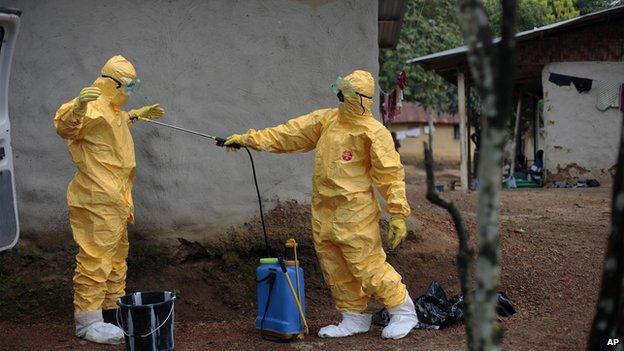
1 in 50
Liberian health workers infected
Ebola is transmitted through patients' body fluids, leaving health workers particularly vulnerable to the disease. Where medics have lacked adequate protection, their rate of infection has been higher.
Figure from Ocha

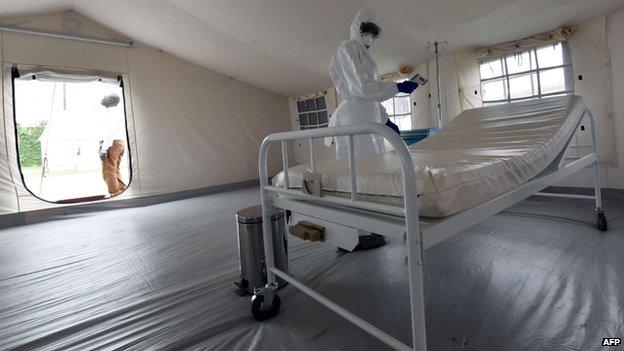
$61.48
cost of a full protective suit
The suit must be worn by medical personnel to protect against infection. It includes a protective mask, goggles, apron, gloves and rubber boots.
Figure from Medecins Sans Frontieres

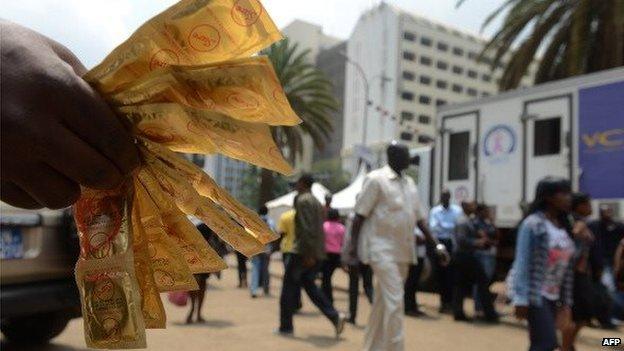
90 days
without sex for survivors of Ebola
The Ebola virus can remain present in semen for a long time. Experts say it is best for men who are recovering from the disease to avoid sex altogether - or make sure they use a condom - for 90 days.
Figure from Peter Piot, of the London School of Hygiene and Tropical Medicine, who discovered Ebola in 1976

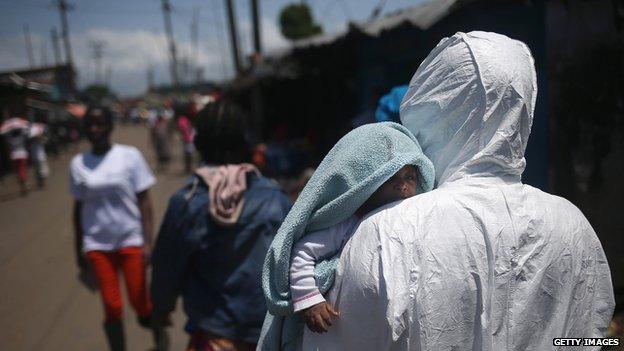
1.7
people infected by each Ebola sufferer in Liberia
The figure of 1.7 means that, on average, every 10 people infected with Ebola in Liberia will have passed the disease on to 17 others. This figure is known as a basic reproduction number. It is used to measure the rate at which an epidemic spreads through a susceptible population. The number fluctuates as scientists keep monitoring new cases.
By comparison, measles - a highly contagious disease - can have a reproduction number of between 12 and 17.
Figure from European Centre for Disease Prevention and Control

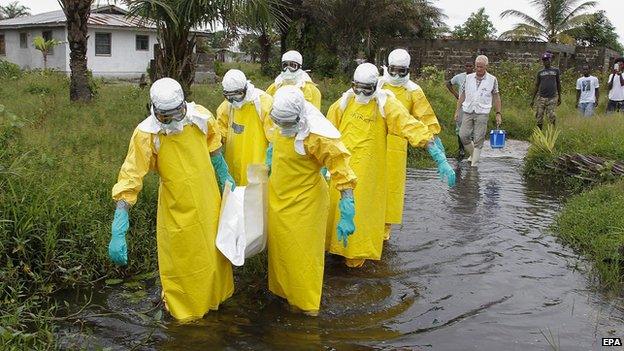
19,980
burial kits needed
The bodies of Ebola victims remain infectious after death. Safe burials are key to checking the spread of the disease.
Figure from UN Office for the Co-ordination of Humanitarian Affairs (Ocha)